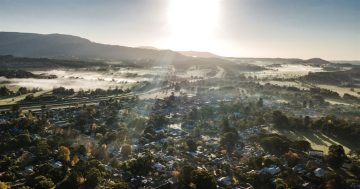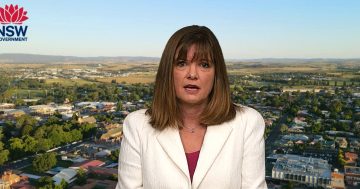
Bega Valley came in as one of the top three areas that saw an increase in industrial land value. Photo: Bega Valley Shire Council.
New statistics show that land values in coastal NSW increased by 1.6%, but the growth wasn’t evenly distributed across the categories.
The new land values were developed by the NSW Government, following an analysis of more than 54,000 property sales. They reflect the value of land only, as of 1 July.
In NSW, land values increased by 6.4%, from $2.8 trillion to $2.98 trillion.
For coastal parts of the state, there was a combined increase of 1.6% across all property types between 1 July 2023 and 1 July 2024, for an increase from $559.8 billion to $568.9 billion.
Valuer General of NSW Sally Dale said the coastal market was being affected by several factors.
“The market has slowed due to reduced demand, interest rate rises and inflation,” she said.
“This trend was generally consistent across all coastal regions,” she said.
Residential land values saw an overall increase of 1.6%, with Central Coast (4.3%), Lake Macquarie (4.1%) and Newcastle (3.9%) topping the list of places with the biggest increases.
However, Wingecarribee (-4.9%), Kiama (-4.1%) and Shoalhaven (-3.0%) experienced the biggest decreases.
“We’re seeing a cooling down of the coastal region residential market due mainly to interest rate rises, higher inflation and increased construction costs,” Ms Dale said.
“This trend was generally consistent across all coastal regions,” Ms Dale said.
On average, industrial land values in coastal NSW grew by 4.7%.
Wollondilly was a strong performer with an increase of 22.8%, which was attributed to increased demand associated with Wollondilly’s proximity to major south-western Sydney infrastructure projects, such as the Western Sydney Airport and the Western Sydney Aerotropolis.
Meanwhile, Bega Valley (17.0%), along with Tweed (15.6%), saw one of the biggest increases in industrial land values.
Also, commercial land values increased a small amount, by less than 1%.
“Limited supply and the tightly held nature of commercial property have been key drivers of commercial land values across the region,” Ms Dale said.
“This has been especially evident in areas like Wollondilly and Port Macquarie-Hastings, where strong demand has resulted in growth that outpaces the regional average.”
Wollondilly (8.1%), Port Macquarie-Hastings (4.4%), Tweed (4.0%) and Kyogle (4.0%) saw the biggest increases, while Coffs Harbour (-4.1%), Lake Macquarie (-2.3%) and Newcastle (-1.5%) all experienced negative growth.
Similar to commercial land, rural land values also increased slightly, by 1.0% overall.
Shellharbour (20.5%) saw the biggest increase in percentage change to rural land values, which was attributed to the constrained supply of rural homesite blocks in the region.
Eurobodalla (11.7%) and Lake Macquarie (8.3%) also experienced strong growth. Shoalhaven (-6.3%), Ballina (-1.9%) and Bellingen (-1.8%) all experienced the biggest decreases in rural land values.
Revenue NSW will use the new land values to calculate land tax for the 2025 land tax year, for landowners subject to land tax. Registered land tax clients will receive their assessment from Revenue NSW from January 2025.
More information on land values and the NSW valuation system can be found online.









